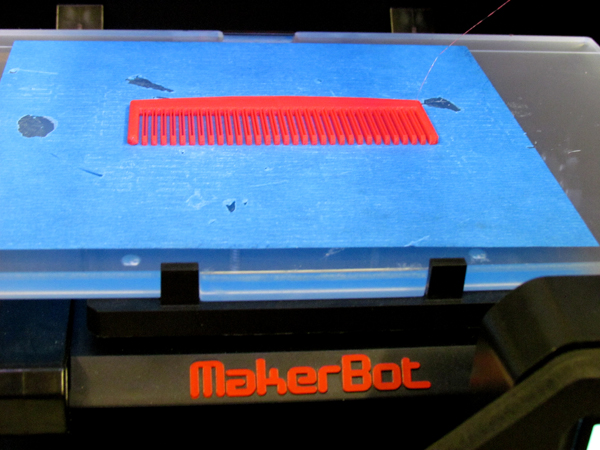What in the ‘Thingiverse’ is going on at the library?
Administrator | May 27, 2015 | Comments 0
Visitors to library had a three-dimensional look into the future that has now arrived at the Picton branch.
Amanda Harrison, the library’s assistant I.T. technician, explained the branch’s new 3D printer, how it works, and demonstrated by “printing” a comb, then used it on her hair.
“The Makerbot Replicator uses a filament made out of vegetable oil to build the design,” she explained. “It heats and melts the filament and uses a building method to create layers of melted filament.”
Harrison explained the replicator uses templates imported from the website “Thingiverse” and stores them on an SD memory card to “3D” print them. The website has more than 100,000 designs contributed by a 3D design community for discovering, printing and sharing 3D models. Items that can be printed include everything from every day tools, to art and trinkets to the parts needed to build your own 3D printer.
A “digitalizer” that reproduces a scan of any item, is on Harrison’s wish list.
The library is taking appointments from patrons who wish to explore the uses of the 3D printer. (Click the link above)
Tutorials on how to use “Thingiverse” will be offered by appointment. Two links are available on the library’s website – one for those who know how to use “Thingiverse” and have template in mind; and one for those who would like to learn how to use “Thingiverse” and print.
The library will charge a fee by the time it takes to complete the build. Following a one dollar flat rate, users will be charged .03 cents a minute, or $1.80 per hour. Patrons can create builds that take up to a maximum of six hours (cost $11.80).
One use most recently shared on international news was the creation of affordable prosthetic hands for children. Predictions are that by 2018, more than 2.3 million 3D printers will be shipped – mostly as consumer desktop 3D printers.
Filed Under: Arts & Culture • Featured Articles
About the Author:





































